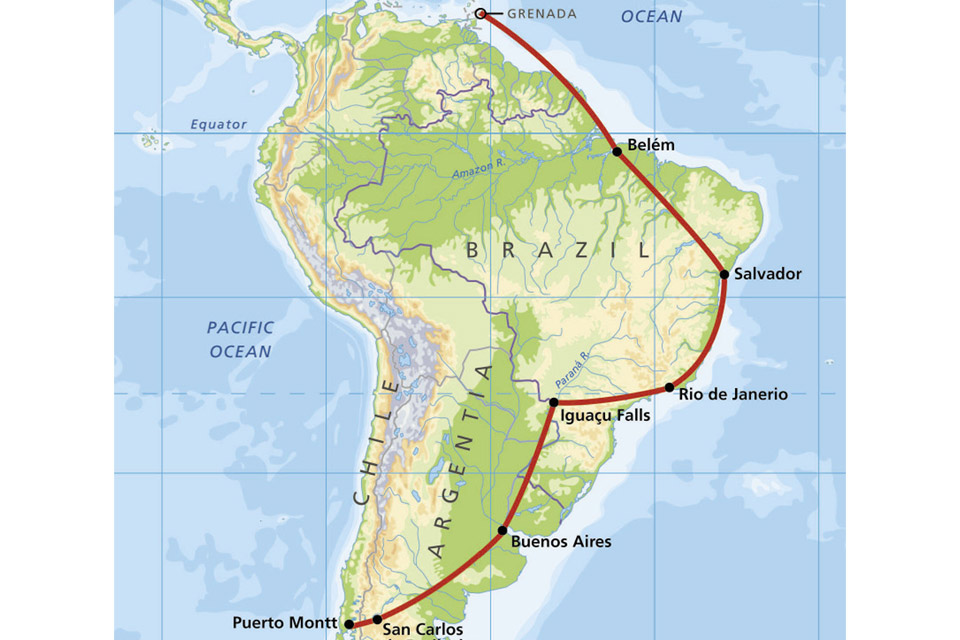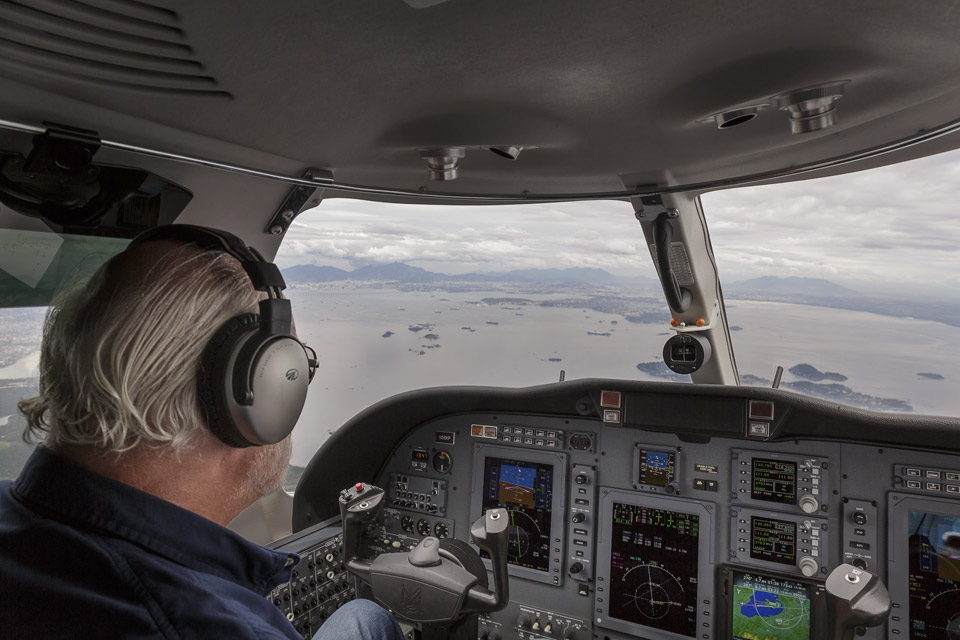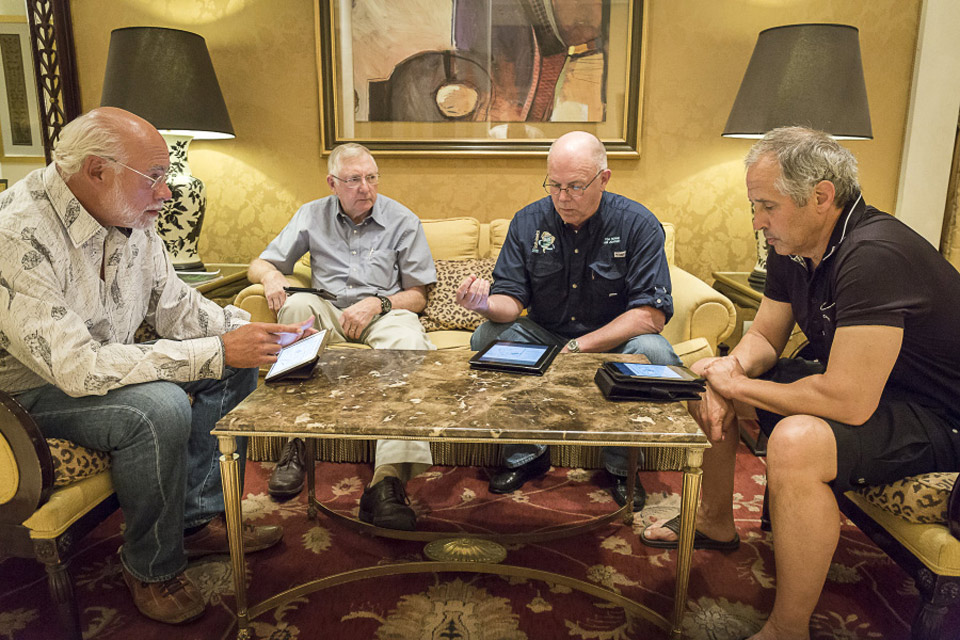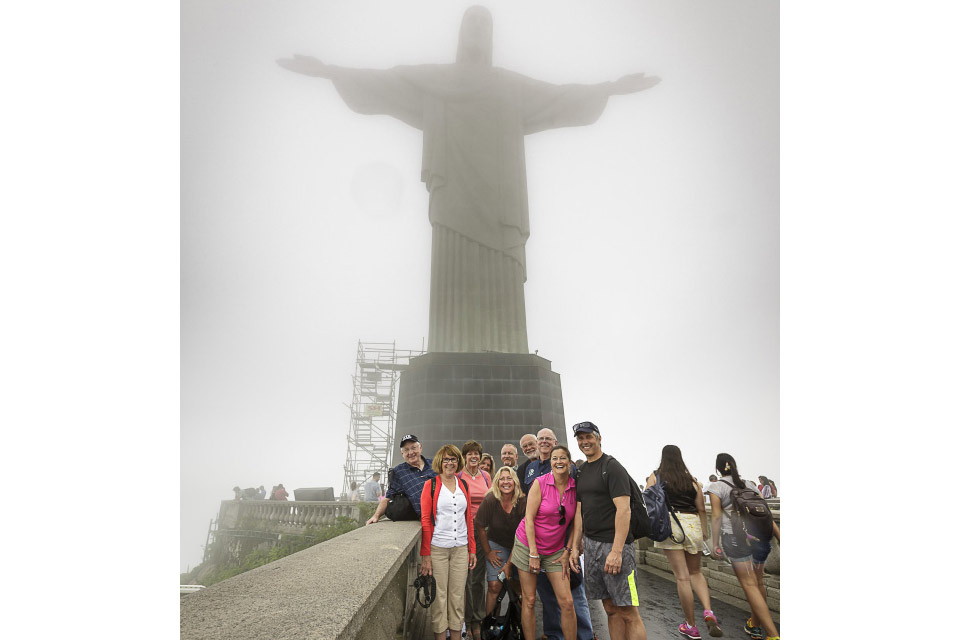When pilots reminisce, they boast of memorable trips—both short and long. And while a 300-mile voyage can provide its share of excitement, it’s those long, ambitious ones that give more bang for the buck. Trouble is, big foreign trips—and by this, I mean thousands of miles long—are daunting once you get into the nitty gritty of the logistics. Handlers? Customs and immigration? Fuel releases? Visas? General declaration forms? After the initial burst of armchair enthusiasm, thinking about those details can subdue the urge. Sometimes, you need an extra push in order to make the commitment.
That’s where Air Journey comes in. Air Journey is a South Florida company that specializes in worldwide escorted tours and personalized flight planning services for general aviation pilots. I’ve been on portions of Air Journey trips in the past, and they’ve been spectacular. But this year there was a twist. Air Journey’s Thierry Pouille asked me if I could stand in as a journey director—a sort of tour guide, if you will—for the second half of a South American tour.
And so it was that I arrived at Puerto Montt, Chile, where I met the pilots and passengers of the 2015 Journey to South America tour. They had just arrived from the first half of the trip, which included such exotic locales as Easter Island and Machu Picchu. There was Joe Howley and his wife, Christine, of Greenwich, Connecticut, who flew their Pilatus PC–12NG; and Mike Williams and Larry and Cathy Wilke of La Porte, Indiana, in their Cessna Citation CJ1+. Ian and Sue Runge would soon join us in their Daher-Socata TBM 700.
And then there was “G.” His real name is Guillaume Fabry and he’s Air Journey’s director of flight operations, but G is easier for the company’s American clientele to pronounce. G would be my mentor for the next two legs of the trip. He’d show me the ropes, tell me how to manage the tour, keep it entertained, keep it moving. That’s when it really sank in. This was a job!
I’m not complaining, mind you. The next day the group flew to San Carlos de Bariloche, Argentina. I flew with Howley, who is vice chairman of the board for Patient Airlift Services (PALS volunteers provide flights for medical purposes, free, to people who cannot afford or are unable to fly commercially), and watched the rugged peaks of the southern Andes slide past beneath lenticulars and an undercast punctuated by the tops of a navigable line of thunderstorms. Soon, all were settled into Bariloche’s Hotel Llao Llao Resort. What a place! It was surrounded by verdant mountains and shimmering lakes, had a golf course, indoor and outdoor pools, and a spa—and the weather was perfect. The surroundings had a distinctly Swiss aura; no wonder this part of Argentina is called the “South American Alps.”
At night, G talked me through what would be a sort of daily drill. The day before a departure, you give a Powerpoint pilot briefing at 6 p.m. This covers the next day’s route and weather, plus details about the next airport and its procedures. At dinner, you give a short rundown of what is planned for the next couple of days, and give the travelers a morning meet-up time for the van ride to the airport. After dinner, I check for the room-service meals. Then set up a luggage pickup for a half-hour before the van arrives.
The day of the flight, be in the lobby 20 minutes before departure. Check to make sure all the bags are there. Go to the airport, meet the handler (a hired agent who helps you plod through the airport bureaucracy), arrange the flight plans, deal with any customs or immigration procedures, pay the airport and other user fees—plus the handler’s fee (cash, please, in U.S. dollars)—and then it’s off to the airplanes. Sometimes, when thunderstorms are likely, go to the airport ahead of the group; arrive around 6 a.m. and take care of the fees right away, so the group can leave early.
At the destination, more critical items come into play. First order of business: fuel the airplanes. Now! Then get with the handler about a van ride to the next hotel, unless it’s already been arranged; load up all the bags and off you go.
A word about fueling. In South America and other overseas locales, fuel is pumped only if there’s a fuel release. This amounts to a fuel company’s permission to start fueling. On Air Journey trips, all the pilots’ fuel releases are in a three-ring binder, along with other critical information. Want to top off without a release? Sometimes in Brazil, that’s a deal-breaker.
None of this much matters once everybody checks into the (inevitably five-star) hotel and the sightseeing begins. For example, on the second leg, to Buenos Aires’ San Fernando Airport, the federal police insisted that every airplane be inspected—in front of the tower, please. And then be individually towed to an FBO. But once ensconced at the Sofitel in downtown Buenos Aires, all the airport hassles faded away. Family friend Joni Bronander joined Howley’s group, there was a tour of the city, G departed and left me on my own, and then we visited Rojo Tango—a club where professional tango dancers held a packed audience’s attention with their tightly choreographed moves. I came away wondering how they keep from injuring each other.
Next on the agenda was the flight to Iguacu Falls, Brazil. On this leg I flew with Mike Williams and the Wilkes. Mike runs Secureall and A&A Sheet Metal Products, which makes security containment systems for hazardous materials. Larry Wilke is the shop manager at the firm, and Cathy is a farrier—a blacksmith, in other words. Everyone laughs when she mentions that her email address is [email protected]. Taking an employee’s family on a five-week trip through South America? We should all have bosses like Mike Williams.
The Iguacu Falls leg gave us an introduction to the cloudiness and convection that define the Amazon basin and its fringes. Of course, William’s CJ1+ can cruise at FL400, where it’s way above the weather and tools along at 380 KTAS or more. Howley, however, like Runge (a mining economist and founder of RungePincockMinarco Limited) and his wife, typically would fly at FL260 or FL270, where he’d be doing 260 KTAS (280 KTAS for Runge) but be in and out of clouds, in the thick of things, and using radar for storm avoidance. Howley and Runge wove around the storm cells, experiencing rain and only short bouts of turbulence. To give them alerts of the worst buildups, Williams and I would relay their locations on a prearranged frequency—135.95 MHz.
Yet another beautiful resort, the Hotel dos Cataratas, located within Brazil’s Iguacu National Park and a UNESCO World Heritage Site, was our home at Iguacu Falls—which is within a few steps of the front door, by the way. A lot closer than the 4,000-foot viewing altitude we got while circling the falls prior to landing. At Iguacu, Ruthanne Ruzika flew in from Connecticut to join Howley’s contingent. The centerpiece of this stop was the Macuco Safari through the jungle, followed by a powerboat ride upstream and into the falls themselves. Everybody was soaked through to the skin, but we had been warned. That night, the group had a Brazilian barbecue and closed down the hotel bar, where Runge impressed everyone with his skill playing the piano.
The next morning, it was a takeoff to another adventure. In Rio, we stayed at the Copacabana Palace, right on the beach of the same name, and took in all the sights—including tram and cable-car rides to the Christ the Redeemer statue and Sugarloaf Mountain.
The next stop was some 655 nm away, at Salvador de Bahia. There, we stayed at a hotel that used to be a convent, the Convento do Carmo, originally built in the sixteenth century. This is in the old part of Salvador known as the Pelourinho, which was one of the first Portuguese settlements in Brazil, served as the fledgling nation’s first capitol, and is another UNESCO World Heritage Site—full of historic churches and an arts community. The night we arrived there was a street festival in full swing because, well, it was Tuesday night. There’s a festival every Tuesday night.
After Salvador, the group was looking forward to the home stretch, which would take us to Belem for an overnight stop, then onward to Grenada, about 1,100 nm away. Howley’s PC–12, with its six-hour endurance, had no trouble going the distance. But Williams, his CJ1+ facing 35-knot winds at FL400, might have been tight on fuel if he went nonstop. In the end, the winds were weaker than predicted, and an early, direct vector to Grenada’s Maurice Bishop International Airport in True Blue (yes, that’s the name of the town) got us there in style. We landed with 690 pounds (about 103 gallons) of reserve fuel.
As a last stop, Grenada’s Laluna Resort was a perfect choice. Right on the beach, your own little chalet with its own little pool, and everyone speaks English. And now, just 14 short days after I joined the group, my work was done. Had it been challenging and stressful at times? You bet! After all, what do you expect from a trip this adventurous—no adventure?
All pilots are fortunate, but some more so than others. Want to join the club? There will be another Air Journey around South America next year, running from February 21 through March 20, 2016. Maybe I’ll see you on the ramp at Palm Beach International on the day of departure.
Email [email protected]
Weather
February and March are late-summer months in South America, so east of the Andes the worst of the thunderstorm season is past—but convection is by no means over in the Amazon basin. However, cold currents off the west coast of South America, along with progressively cooler temperatures in the southern regions, can bring coastal fogs. In these months, the higher-elevation areas around Cusco and Macchu Pichu begin to experience a drop in precipitation and wind strengths from the summer’s highs. The southernmost portions of South America, being in the “roaring forties” and “furious fifties”—named for their southern latitudes—can have strong surface winds (sometimes, up to 50 knots or more) and turbulence.
TRAVEL DETAILS
Thinking of going on Air Journey’s next South American trip? Because of the terrain, weather considerations, and the leg distances, turbine-powered airplanes are best suited for the South America mission. The price is $22,995 plus a $4,950 charge per airplane. This covers flight planning, hotels, most meals, transfers between airports and hotels, sightseeing trips, and much more.
For more information, see the website.











